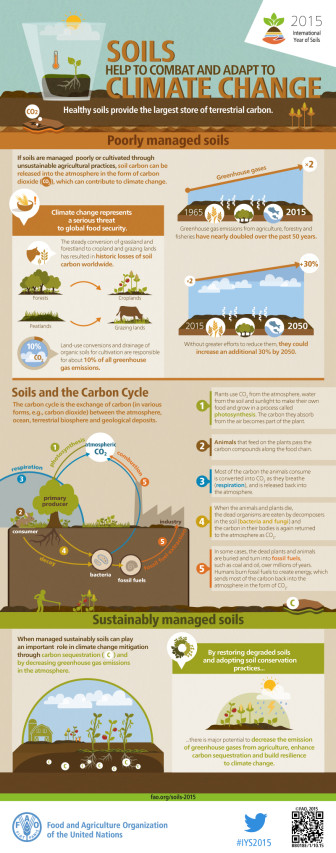You’re standing on it. It’s the soil.
Photosynthesis, as we learned in school, takes carbon from the air and puts it back into the soil.
So why isn’t it happening? Simple. We have destroyed our soil with chemicals and industrial techniques. Over 70% of our soil is gone or dying. Soil designed to hold all that carbon now stuck in the air creating climate change.
Here’s the good news:
Restore that soil and it will bring that carbon back and fix the climate.
There are a billion acres used to produce food in US alone.
If we restore the health of that soil we can draw down 3 billion tons of carbon per year.
That’s not a reduction in emissions, that’s 3 billion tons of carbon removed from our atmosphere every year! And put back into the soil. Where it belongs. Where it came from. Where God or nature wants it!
So we need to tell Congress to stop giving subsidies to rich farmers destroying the soil and give it to farmers who will restore the soil. And feed us better food. And help reverse climate change.
We need to tell President Obama and the next man…or the next woman…in the White House to stop focusing simply on the problem and start focusing on the solution.
And if any of them think that reducing emissions alone is the solution, they’d better talk to their own government scientists. Cutting emissions won’t cut it in solving climate change.
We must bring some of the carbon we’ve already put up into the air back down, and put it back underground.
We’ve got 500,000 people here. Let’s send a message to the 500 people there– in Congress:
FIX THE SOIL. FIX THE CLIMATE.
FIX THE SOIL. FIX THE CLIMATE.”

